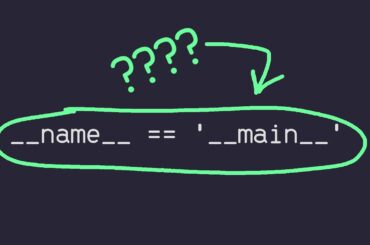Depth-First Search (DFS) is a fundamental algorithm for traversing or searching tree or graph data structures. The algorithm starts at a root node and explores as far as possible along each branch before backtracking. This tutorial will guide you through the concepts and implementation of DFS, making it easy to understand even if you are new to graph theory.
What is Depth-First Search (DFS)?
DFS is a traversal algorithm used for both graphs and trees. It starts at a given node (often called the root) and explores as far as possible along each branch before backtracking. DFS can be implemented using either recursion or a stack.
DFS Applications
- Finding connected components in a graph.
- Solving puzzles with only one solution, such as mazes.
- Topological sorting.
- Pathfinding algorithms.
- Cycle detection in graphs.
DFS in Graphs
A graph consists of nodes (vertices) connected by edges. Graphs can be either directed or undirected. In DFS, we visit a node and then recursively visit all its adjacent nodes.
Example Graph
Consider the following directed graph:
A
/ \
B C
/ \ \
D E FDFS Algorithm Steps
- Start at the root node (e.g., A).
- Mark the current node as visited.
- Explore each adjacent node that hasn’t been visited.
- Repeat the process for each of those nodes.
DFS Implementation in Python
Let’s implement DFS using both recursive and iterative approaches.
Recursive DFS
# Define the graph as an adjacency list
graph = {
'A': ['B', 'C'],
'B': ['D', 'E'],
'C': ['F'],
'D': [],
'E': [],
'F': []
}
# Recursive DFS function
def dfs_recursive(graph, node, visited=None):
if visited is None:
visited = set()
if node not in visited:
print(node, end=" ")
visited.add(node)
for neighbor in graph[node]:
dfs_recursive(graph, neighbor, visited)
# Starting DFS from node 'A'
dfs_recursive(graph, 'A')Output
A B D E C FIterative DFS
def dfs_iterative(graph, start):
visited = set()
stack = [start]
while stack:
node = stack.pop()
if node not in visited:
print(node, end=" ")
visited.add(node
stack.extend(reversed(graph[node]))
# Starting DFS from node 'A'
dfs_iterative(graph, 'A')Output
A C F B E DDFS in Trees
A tree is a special case of a graph where there are no cycles, and there is exactly one path between any two nodes. Trees can be binary (each node has at most two children) or more general.
Binary Tree Example
Consider the following binary tree:
1
/ \
2 3
/ \ \
4 5 6DFS Tree Traversals
There are three common types of DFS tree traversals:
- Inorder Traversal (Left, Root, Right)
- Preorder Traversal (Root, Left, Right)
- Postorder Traversal (Left, Right, Root)
Inorder Traversal
Recursive Inorder Traversal
class TreeNode:
def __init__(self, value):
self.value = value
self.left = None
self.right = None
def inorder_traversal(root):
if root:
inorder_traversal(root.left)
print(root.value, end=" ")
inorder_traversal(root.right)
# Constructing the tree
root = TreeNode(1)
root.left = TreeNode(2)
root.right = TreeNode(3)
root.left.left = TreeNode(4)
root.left.right = TreeNode(5)
root.right.right = TreeNode(6)
# Performing inorder traversal
inorder_traversal(root)Output
4 2 5 1 3 6Preorder Traversal
Recursive Preorder Traversal
def preorder_traversal(root):
if root:
print(root.value, end=" ")
preorder_traversal(root.left)
preorder_traversal(root.right)
# Performing preorder traversal
preorder_traversal(root)Output
1 2 4 5 3 6Postorder Traversal
Recursive Postorder Traversal
def postorder_traversal(root):
if root:
postorder_traversal(root.left)
postorder_traversal(root.right)
print(root.value, end=" ")
# Performing postorder traversal
postorder_traversal(root)Output
4 5 2 6 3 1Conclusion
DFS is a versatile algorithm that can be applied to both graphs and trees. Understanding DFS helps in solving complex problems related to graph theory and tree traversal. We’ve explored the recursive and iterative implementations of DFS in graphs, as well as the common types of tree traversals. Practice implementing these algorithms to strengthen your grasp of DFS and its applications.
With this comprehensive guide, you should now have a solid understanding of the DFS algorithm and how to apply it to graphs and trees. Happy coding!

